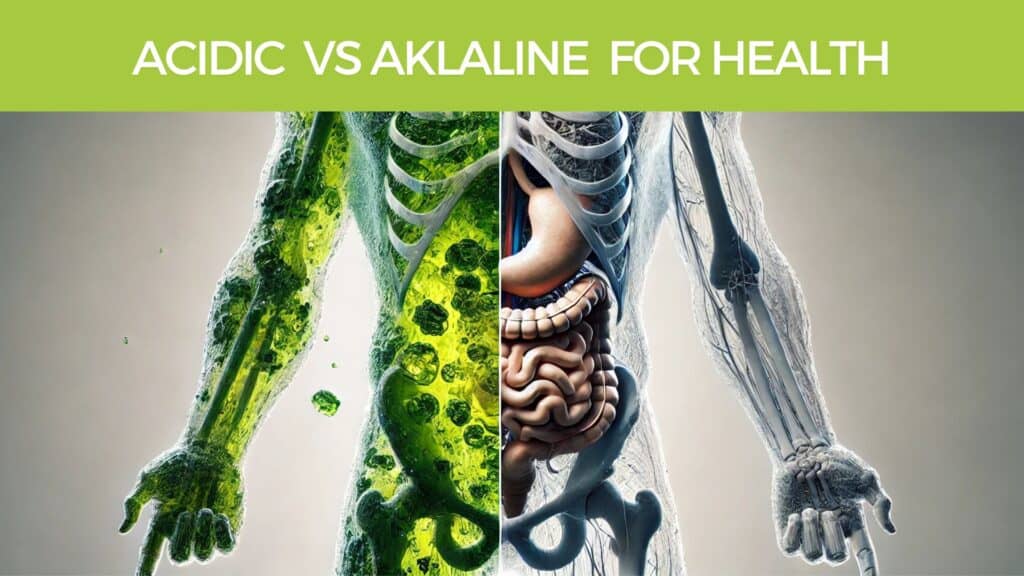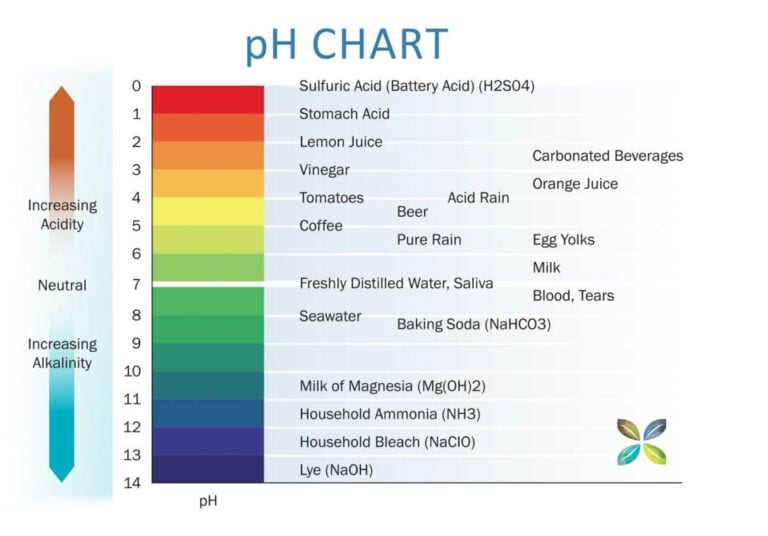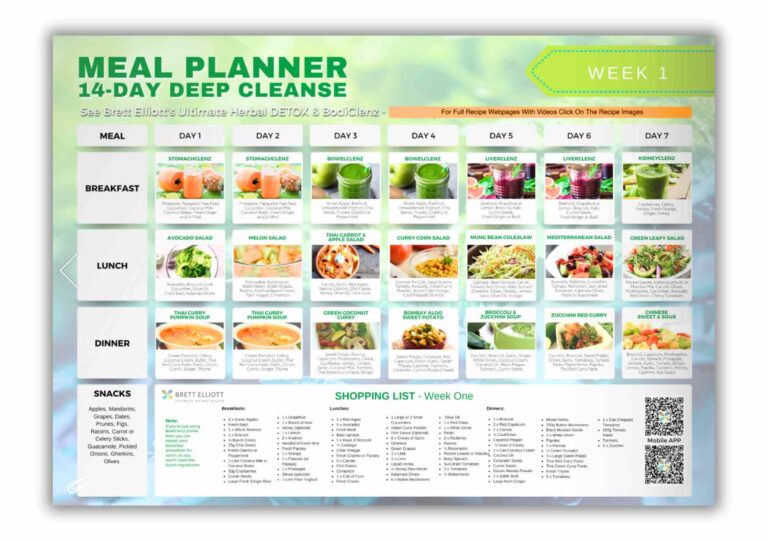- 15 hours ago
- 30Minutes
- 6289Words
- 650Views
Do you have an acid related problem, and can Alkalizing “Detox Diets” make a real difference?
(1) The clinical spectrum of chronic metabolic acidosis: homeostatic mechanisms produce significant morbidity. PUBMED https://www.ncbi.nlm.nih.gov/pubmed/9016905
(2) Net calcium efflux from live bone during chronic metabolic, but not respiratory, acidosis. PUBMED https://www.ncbi.nlm.nih.gov/pubmed/2719118
(3) Attainment and Maintenance of Normal Stature with Alkali Therapy in Infants and Children with Classic Renal Tubular Acidosis. PUBMED https://www.ncbi.nlm.nih.gov/pmc/articles/PMC372562/pdf/jcinvest00662-0283.pdf
(4) Chronic metabolic acidosis increases the serum concentration of 1,25-dihydroxy vitamin D in humans by stimulating its production rate. Critical role of acidosis-induced renal hypophosphatemia. PUBMED https://www.ncbi.nlm.nih.gov/pmc/articles/PMC443402/
(5) Acid-Base Disorders in Patients with Chronic Obstructive Pulmonary Disease: A Pathophysiological Review. PUBMED https://www.ncbi.nlm.nih.gov/pmc/articles/PMC3303884/
(6) Inflammatory mediators potentiate pain induced by experimental tissue acidosis. PUBMED https://www.ncbi.nlm.nih.gov/pubmed/8880837
(7) Experimental tissue acidosis leads to increased pain in complex regional pain syndrome (CRPS). https://www.ncbi.nlm.nih.gov/pubmed/10924816
(8) Acidic Buffer Induced Muscle Pain Evokes Referred Pain and Mechanical Hyperalgesia in Humans. PUBMED https://www.ncbi.nlm.nih.gov/pmc/articles/PMC2613646/
(9) Medicine Pl https://medlineplus.gov/ency/article/001181.htmus
(10) Kidney Stones: A Global Picture of Prevalence, Incidence, and Associated Risk Factors. PUBMED https://www.ncbi.nlm.nih.gov/pmc/articles/PMC2931286/
(11) Nutritional disturbance in acid-base balance and osteoporosis: a hypothesis that disregards the essential homeostatic role of the kidney. PUBMED https://www.ncbi.nlm.nih.gov/pmc/articles/PMC3828631/
(12) The Alkaline Diet: Is There Evidence That an Alkaline pH Diet Benefits Health? PUBMED https://www.ncbi.nlm.nih.gov/pmc/articles/PMC3195546/
(13) Dietary acid load and chronic kidney disease among adults in the United States. PUBMED https://www.ncbi.nlm.nih.gov/pmc/articles/PMC4151375/
(14) PRAL: calculate the acid/alkaline balance of your diet. http://www.bitterpoison.com/archive/calculate-acid-alkaline-with-pral-formula/
(15) Alkaline diets favor lean tissue mass in older adults. PUBMED https://www.ncbi.nlm.nih.gov/pmc/articles/PMC2597402/
(16) Oxford Dictionary https://en.oxforddictionaries.com/definition/ph
(17) Encyclopedia.com http://www.encyclopedia.com/medicine/encyclopedias-almanacs-transcripts-and-maps/acid-base-homeostasis
(18) Examining the relationship between diet-induced acidosis and cancer. PUBMED https://www.ncbi.nlm.nih.gov/pmc/articles/PMC3571898/
(19) The Association Between Reflux Esophagitis and Psychosocial Stress. PUBMED https://www.ncbi.nlm.nih.gov/pmc/articles/PMC3576549/
(20) Gout: a review of non-modifiable and modifiable risk factors. PUBMED https://www.ncbi.nlm.nih.gov/pmc/articles/PMC4251556/
(21) Serum anion gap, bicarbonate and biomarkers of inflammation in healthy individuals in a national survey. PUBMED https://www.ncbi.nlm.nih.gov/pmc/articles/PMC2817320/
(22) The role of inflammation in age-related disease. PUBMED https://www.ncbi.nlm.nih.gov/pmc/articles/PMC3616233/
(23) Dietary animal and plant protein and human bone health: a whole foods approach. PUBMED https://www.ncbi.nlm.nih.gov/pubmed/12612170
(24) Serum Uric Acid Concentrations in Meat Eaters, Fish Eaters, Vegetarians, and Vegans: A Cross-Sectional Analysis in the EPIC-Oxford Cohort PUBMED https://www.ncbi.nlm.nih.gov/pmc/articles/PMC3572016/
(25) Association between dietary acid load and the risk of cardiovascular disease: nationwide surveys (KNHANES 2008–2011). https://www.ncbi.nlm.nih.gov/pmc/articles/PMC5002186/
(26) Dietary potential renal acid load and renal net acid excretion in healthy, free-living children and adolescents. https://academic.oup.com/ajcn/article/77/5/1255/4689835
(27) THE INTERNAL DISTRIBUTION OF HYDROGEN IONS WITH VARYING DEGREES OF METABOLIC ACIDOSIS’. PUBMED. https://www.ncbi.nlm.nih.gov/pmc/articles/PMC1072653/pdf/jcinvest00747-0023.pdf
(28) Acidosis: An Old Idea Validated by New Research. PUBMED https://www.ncbi.nlm.nih.gov/pmc/articles/PMC4566456/
(29) The Alkaline Diet: Is There Evidence That an Alkaline pH Diet Benefits Health? PUBMED https://www.ncbi.nlm.nih.gov/pmc/articles/PMC3195546/
(30) Higher dietary acid load potentially increases serum triglyceride and obesity prevalence in adults: An updated systematic review and meta-analysis. PUBMED https://www.ncbi.nlm.nih.gov/pmc/articles/PMC6508739/
(31) Physiology, Acid Base Balance. PUBMED https://www.ncbi.nlm.nih.gov/books/NBK507807/
(32) Diet-induced metabolic acidosis. PUBMED https://pubmed.ncbi.nlm.nih.gov/21481501/
(33) Low-grade metabolic acidosis as a driver of chronic disease: a 21st century public health crisis. BMJ https://openheart.bmj.com/content/8/2/e001730
(34) Diet quality and dietary acid load in relation to cardiovascular disease mortality: Results from Fasa PERSIAN cohort study. PUBMED
https://pmc.ncbi.nlm.nih.gov/articles/PMC10002926/
Debunking The Acid/Alkaline Myth
Up until about 10 years ago, no research existed to counter the skepticism around alkaline diet trends.
However, since then, a growing body of research has documented not only that “acidosis” is a real phenomenon, but that it is now known to contribute to a wide range of diseases, such as:
- Metabolic syndrome & weight gain
- Cancer – Thrives in an acid environment
- Osteoporosis – Bone mineral leaching
- Kidney stones – Calcium deopsits
- Increased susceptibility to environmental toxins (28)
New research is constantly being added to this list.
Acid is just like rust! It’s insidious and it eats away at you causing all kinds of problems.
But what causes acid build-up, and how can you get rid of it?

Can Your Body Become Acidic?
Those who say “You can’t become acidic” have simply not done their homework, and need to look again. Let’s lift the lid on acid once and for all.
What we will discuss on this page is:
- What is Acid and pH?
- The types of acidosis and their range of negative health effects.
- How can an acid-forming diet cause weight gain, osteoporosis, cancer, and more?
- What you can safely do to alkalize your body with diet, detoxing, and healing herbs.
- How the detox organs can become compromised by acid, and unable to perform their alkalizing task.
- A deeper dive into the metabolic process behind developing acidosis.
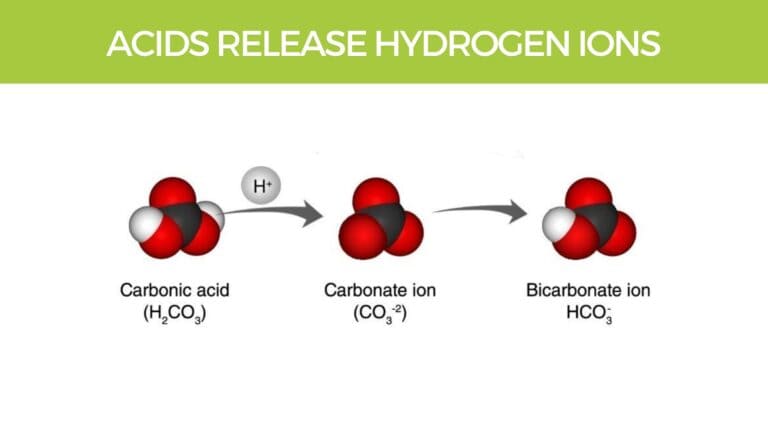
What is Acid?
When chemical reactions in your body release pure Hydrogen atoms they are classed as acid-forming reactions.
Hydrogen atoms (ions) rip apart everything they touch, just like oxygen causes rust oxidation.
It’s the same principle. All living things depend on water. Life consists of a highly complex series of chemical reactions occurring in aqueous media. Among the most important factors in the composition of these fluids are the concentrations of hydrogen ions and hydroxide ions, which determine the acidity or alkalinity of the fluid.
The maintenance of suitable concentrations of these ions is called acid-base homeostasis (acid balance). (17)
The body has several lines of defense to accommodate surplus acid or base. The extracellular fluid, the contents of the cells, and the bone all provide chemical buffering. A buffer is a system of chemicals that combines with an excess of hydrogen ions or hydroxide ions. Buffering, therefore, tends to stabilize the hydrogen ion concentration. It minimizes changes but does not alter the total acid or base load in the body.
The final disposal of surplus fixed acid or base may be via metabolic pathways in the body, as described for lactic acid in the healthy exercising person. If such mechanisms are not available, then the excess acid or base must be expelled from the body, via the lungs and kidneys (17)
What does pH actually mean?
pH is a figure expressing the acidity or alkalinity of a solution on a logarithmic scale on which 7 is neutral, lower values are more acid, and higher values are more alkaline. (16)
If you want to attempt to resolve any of the health issues below then trying an alkaline diet plan could be worthwhile.
Normal pH Ranges:
- Blood pH: Is tightly regulated between 7.35 and 7.45. This slightly alkaline range is crucial for maintaining the proper functioning of various bodily systems.
- Saliva pH: Typically ranges from 6.2 to 7.6 throughout the day. It is usually more acidic in the morning and becomes more alkaline after meals.
- Urinary pH: Can vary more widely, from 4.5 to 8.0, depending on diet and time of day. The kidneys regulate this to maintain acid-base balance.

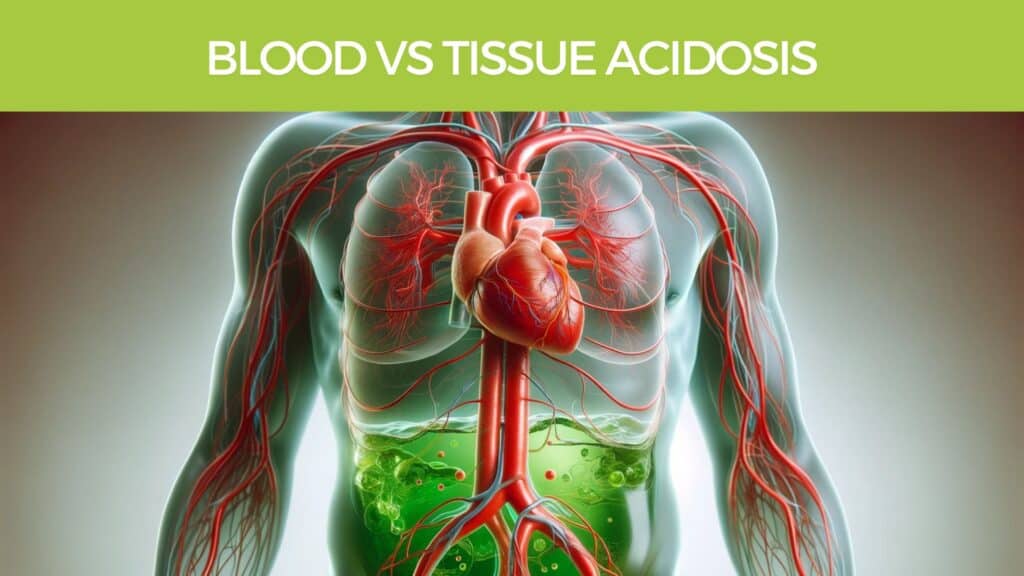
What Is An Acidic Body?
- Skeptics of Natural Medicine often say “You can’t alkalize your body because your body can not become acidic” This is absolutely false.
What they should say is “Your body will not let the blood become acidic”
We simply could not survive with acidic blood (acidemia), but this, unfortunately, leaves the rest of the body tissues at risk (acidosis).
Here is a brief look at the difference between these two types of acidity.
Blood Acidity (Acidemia)
- Blood acidity, or acidemia, is rare due to the body’s robust regulatory systems that maintain blood pH within a very narrow range (7.35 to 7.45). The body prioritizes maintaining this pH level because even slight deviations can be life-threatening.
- The mechanisms involved include buffering by bicarbonate, exhalation of carbon dioxide by the lungs, and excretion of hydrogen ions by the kidneys. These systems are typically very effective, making acidemia less common except in severe or acute medical conditions, such as respiratory failure or kidney disease.
Tissue Acidity (Acidosis)
- Tissue acidity, or acidosis, refers to the condition where there is an accumulation of acid or depletion of alkaline reserves more locally in the tissues rather than in the blood. This is a more common occurrence, influenced by diet, metabolism, and cellular function.
- Chronic tissue acidity is often associated with symptoms and conditions such as fatigue, muscle pain, and exacerbation of existing conditions like osteoporosis and kidney stones. It is generally more manageable and linked to lifestyle factors.
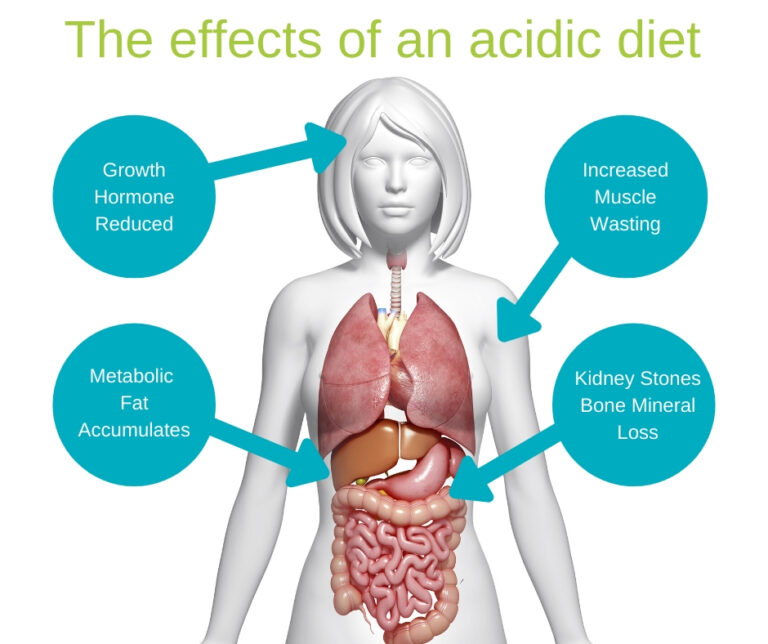
Common Ailments Linked to Acidosis
The fact is that many common ailments we suffer from today can be the result of excess acid-forming properties of food and a build-up in body tissues.
These include:
- Acid Reflux
- Arthritis
- Cancer
- Cardiovascular Disorders
- Diabetes
- Gout
- Kidney Stones
- Metabolic Syndrome & Weight Gain
- Muscular Pain
- Stunted Growth
- Osteoporosis, OsteoArthritis
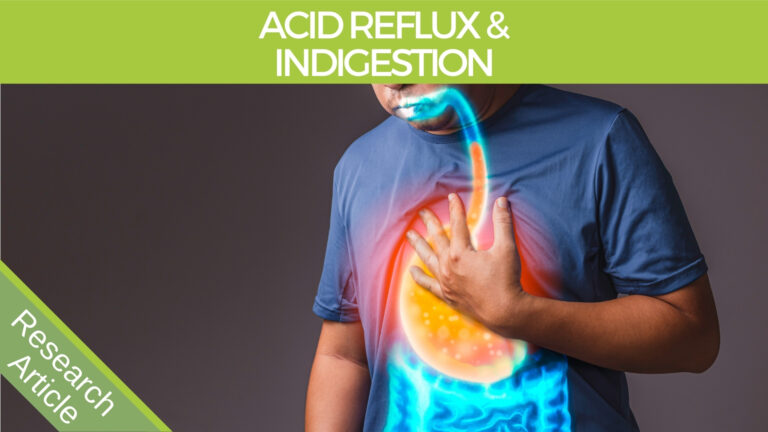
Acid Reflux & Acidosis
Although acid reflux generally indicates a digestive acid deficiency, chronic tissue acidosis does contribute to the pattern of acid reflux in a couple of ways.
- Lower Esophageal Sphincter Relaxation: Chronic acidosis can lead to the relaxation of the lower esophageal sphincter, allowing stomach acid to escape into the esophagus, causing reflux symptoms.
- Increased Stomach Acidity: A high animal protein/acidic diet may increase stomach acidity, and sluggish digestion, exacerbating reflux and associated discomfort.
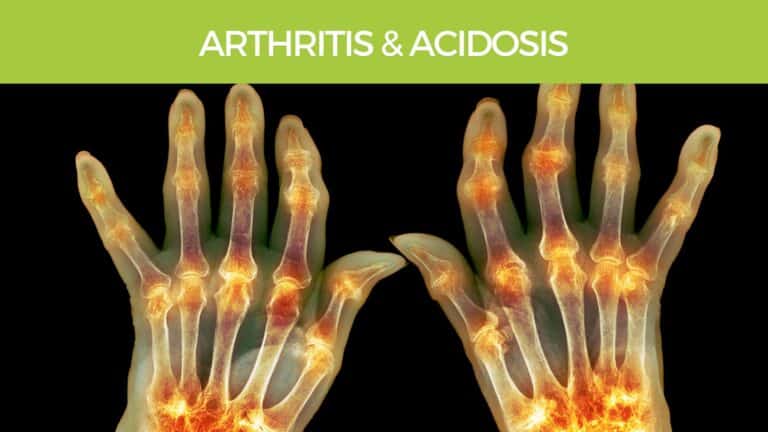
Arthritis & Acidosis
Metabolic acidosis, where the body has an excess of acid or a significant decrease in bicarbonate, can have various impacts on the body, including potentially influencing arthritis. Here’s a breakdown of how these two might be linked:
- Calcium Mobilization: Chronic metabolic acidosis can lead to the mobilization of calcium from bones to buffer the excess hydrogen ions in the blood. This calcium loss can weaken bones, potentially exacerbating conditions like osteoarthritis.
- Increased Inflammation: Metabolic acidosis might increase levels of inflammation in the body. Inflammation is a key factor in many forms of arthritis, including rheumatoid arthritis.
- Effect on Connective Tissue: The acidic environment may alter the properties and functioning of connective tissues. Collagen, which is vital for the structural integrity of cartilage and connective tissue in joints, degrades faster in more acidic conditions.

Cancer And Alkaline Diet
Persistent acidic diets have the potential to cause small decreases in blood pH, but not beyond the normal physiological range.
- Acidity is a well-known factor associated with cancer. In the extracellular space Lower pH levels promote the invasive and metastatic potential of cancer cells.
(18) - Acidosis can cause the body to produce more insulin than normal, triggering‘insulin resistance’ a condition linked to an increased risk of several types of cancer including colorectal, pancreatic, and breast cancer. (18)
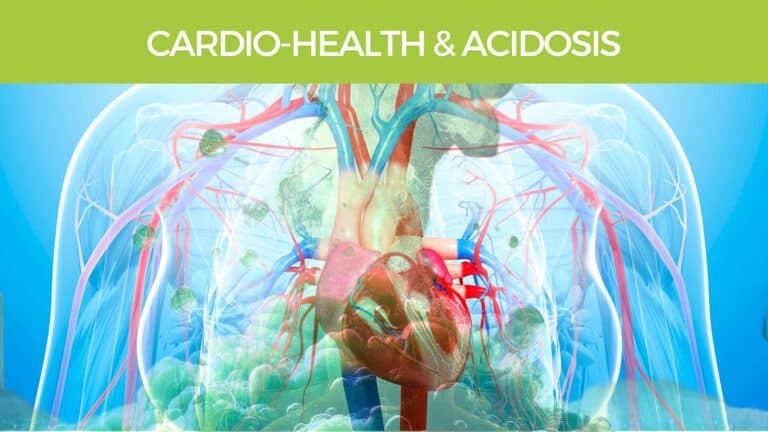
Cardiovascular Health And Acidosis
Clear links have been established between chronic low-grade metabolic acidosis and cardiovascular disease. For example individuals with higher diet-induced acid load were reported to exhibit 27% increases of hypertension development regardless of age. (25)
- Cardiovascular Risk Factors: Chronic low-grade metabolic acidosis is associated with factors that increase the risk of cardiovascular diseases, such as endothelial dysfunction and arterial stiffness. (33)
- Elevated Blood Pressure: Metabolic acidosis can lead to increased blood pressure, by constricting blood vessels and disrupting electrolyts balance, further elevating cardiovascular risk. (33)
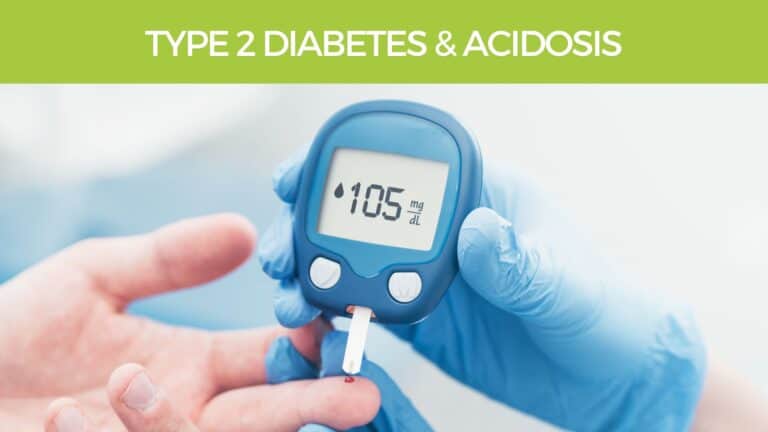
Diabetes - Type 2
A well established link between chronic metabolic acidosis and type 2 diabetes has been established. For example, in one study, men with the highest dietary acid-load had a 61 % increased type 2 diabetes prevalence in over 5 years follow-up period. (25)
- Chronic metabolic acidosis is now recognized as a distinct feature of type 2 diabetes, referred to as CMAD (Chronic Metabolic Acidosis of Diabetes Type 2). This condition is characterized by low blood bicarbonate levels, low pH of interstitial fluid and urine, and a typical response to acid-reducing treatments. (33)
- Biological Indicators and Mechanisms: The presence of chronic metabolic acidosis in individuals with type 2 diabetes may lead to insulin resistance and altered glucose metabolism, both of which are central to the development and exacerbation of diabetes. (33)
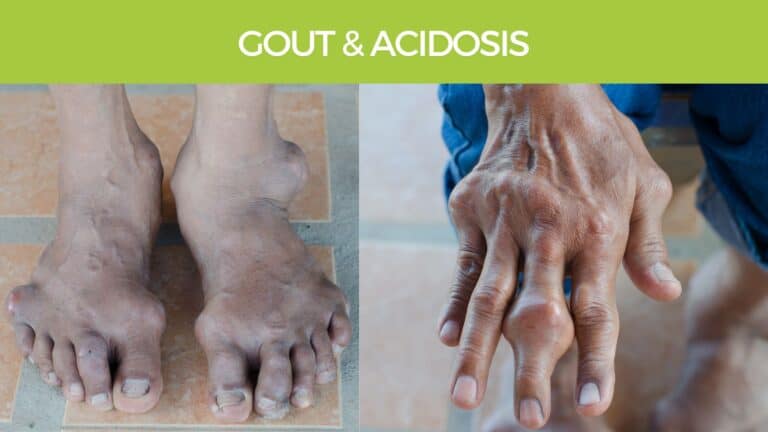
Uric Acid, Gout & Acidosis
Uric acid is a product of the metabolic breakdown of purine nucleotides (which come from meats), and it is a normal component of urine. High blood concentrations of uric acid can lead to gout.
Data has demonstrated increased uric acid levels in association with greater meat, seafood and alcohol consumption. (20)
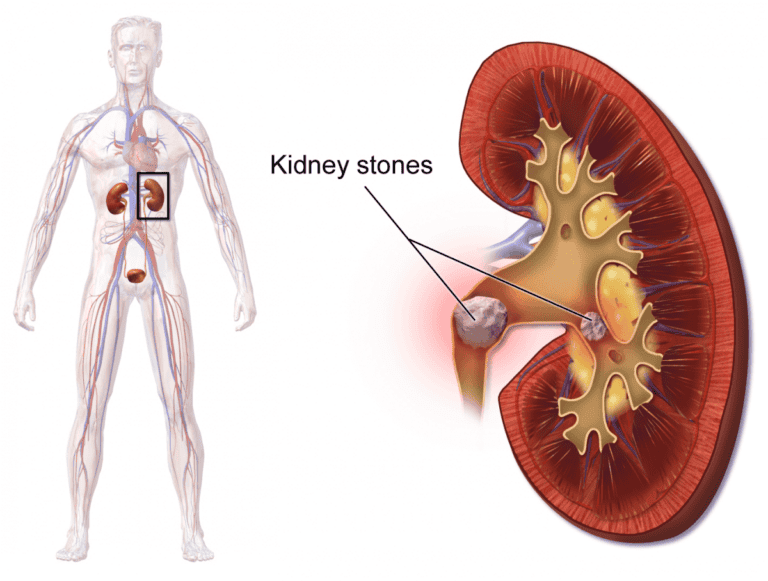
Kidney Stones and Alkaline Diet
Evidence suggests that the incidence and prevalence of kidney stones are increasing globally. Changes in dietary practices may be a key driving force. (10)
Diet can markedly affect the acid-base status and it significantly influences chronic kidney disease and its progression. (33).
- The consumption of fast foods and high fructose corn syrup preparations has been thought to promote this epidemic.
- A diet high in potential acid load, is associated with a higher risk of calcium oxalate stone formation.
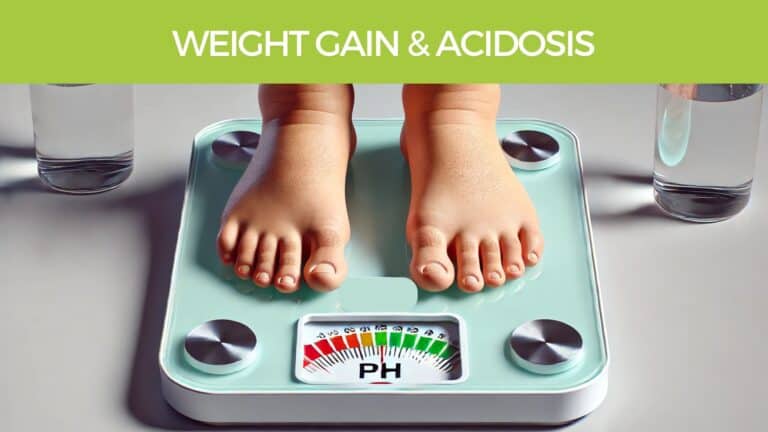
Metabolic Syndrome, Weight Gain & Acidosis
There are a number of reasons why a high protein (acid-forming) diet is not ideal for weight loss.
A high protein diet causes a condition described as ‘diet-induced’, ‘low-grade’, or ‘chronic metabolic acidosis’ or sometimes ‘latent acidosis’. Diet-induced acidosis is distinct from clinical metabolic acidosis in that clinical metabolic acidosis occurs when factors other than just acidic diet contribute a system’s inability to compensate for low blood pH. (18)
- Metabolic Syndrome (Abdominal weight gain): Recently, the role of diet-related low-level metabolic acidosis in the development of metabolic disorders including metabolic syndrome, diabetes, and heart disease has been suggested by numerous researchers highlighting the triggering effects of Western dietary patterns. Metabolic syndrome and obesity are clearly associated with impaired acid-alkaline balance in the diet. (30)
- Muscle Wasting: As we age, there is a loss of muscle mass, which may predispose us to falls and fractures. A three-year study looking at a diet rich in potassium, such as fruits and vegetables, as well as a reduced acid load, resulted in the preservation of muscle mass in older men and women. Conditions such as chronic renal failure that result in chronic metabolic acidosis result in an accelerated breakdown in skeletal muscle. Correction of acidosis may preserve muscle mass in conditions where muscle wasting is common. (29) This retention of muscle mass is a critical factor when it comes to weight loss, as no amount of fasting, calorie counting or exercise will enable you to lose weight if your body is acidic and you’re unable to retain muscle mass.
- Growth Hormone: It has long been known that severe forms of metabolic acidosis in children, such as renal tubular acidosis, are associated with low levels of growth hormone with resultant short stature. Correction of the acidosis with bicarbonate or potassium increases growth hormone significantly and improves growth. The use of enough potassium bicarbonate in the diet to neutralize the daily net acid load in postmenopausal women resulted in a significant increase in growth hormone, improving growth hormone levels may improve quality of life, reduce cardiovascular risk factors, improve body composition, and even improve memory and cognition. As well this results in a reduction of urinary calcium loss equivalent to 5% of bone calcium content over a period of 3 years. (29)
In other words, an alkaline diet increases the growth of muscle and bone, making it a lot easier to exercise and to lose weight.
Learn more about how an acidic diet affects your health, and how to avoid it below.
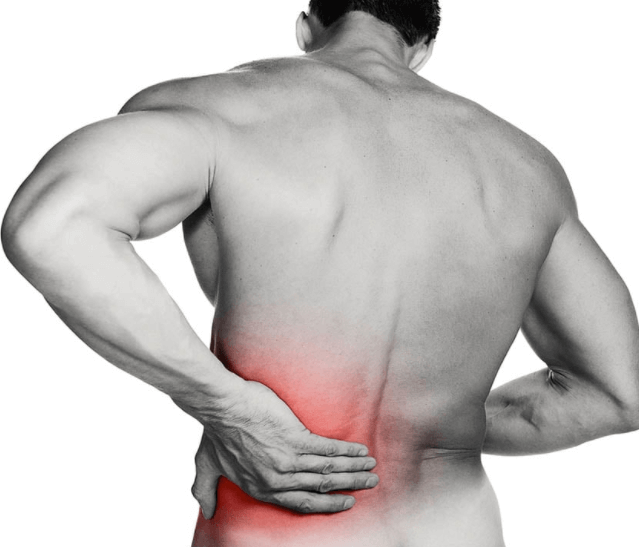
Muscular Pain & Acidosis
Tissue acidosis appears as a dominant factor in inflammatory pain. (6)
One study investigated the role of local acidosis in the generation of pain in complex regional pain syndrome. It was demonstrated that acidic fluid causes pain, not only restricted to the skin but it also generated in deep tissue pain of the affected limb. (7)
Results of another study demonstrate muscle acidosis can lead to local and referred pain
(8)

Stunted Growth
The hormonal stimulus to maintain calcium and phosphorus homeostasis, calcitriol, is dramatically altered by chronic metabolic acidosis so it is easy to understand the profound clinical effects of the acidosis on the skeleton of growing children. (4)
When alkali therapy was begun, six patients (four infants and two children) were stunted. At the start of alkali therapy, the rate of growth increased two to threefold, and normal heights were attained within 6 months of initiating alkali therapy in the stunted infants and within 3 yr in the stunted children; (3)
Could this explain why we shrink as we get older and our bones dematerialize? It all seems to fit together.
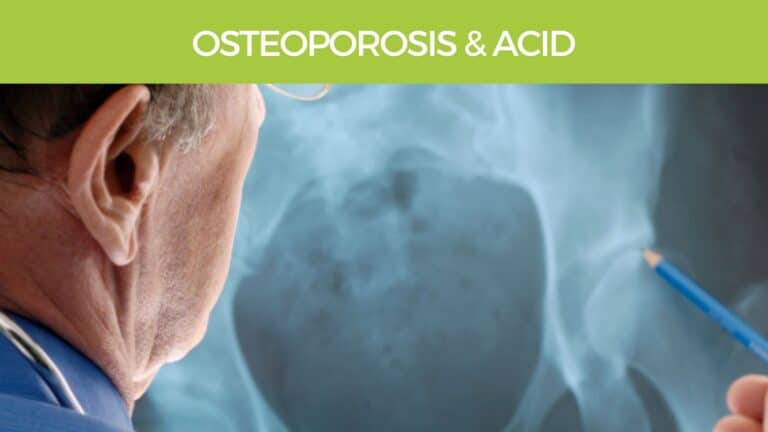
Bone Density Decreases (Osteomalacia)
One study clearly showed chronic metabolic acidosis induces bone mineral dissolution. (2) An over-acidic diet will cause the bone matrix to dump calcium increasing calcium elimination via the kidneys.
Bone citrate and carbonate are mobilized to neutralize these acids, so urinary calcium increases when dietary protein increases. (23) Age-related decline in kidney function, with its associated trend towards metabolic acidosis, would be sufficiently important to accelerate bone resorption while reducing bone formation, and thus could eventually explain the increased incidence of osteoporotic fractures with aging. (11)
Considering the epidemic of kidney stones (connected with dietary habits) and age-related kidney function decline, you can clearly see how an acidic diet could play a major role in many cases of metabolic acidosis and osteoporosis.

How To Alkalise The Body With Diet
There are a few specific acidic and alkaline foods worth knowing about. The main thing is to have more of the alkaline foods in your diet long-term to avoid the conditions above. You can monitor your acidity using pH strips.
Generally speaking, the foods which have the highest dietary acid load include cheese, meat, eggs, and grains. (13)
Here are a couple of the mechanisms involved:
Increasing Alkalinity: Foods high in alkaline minerals such as potassium, calcium, and magnesium help neutralize acidic compounds in the body.
Reducing Acidity: Minimizing intake of acid-forming foods which are high in phosphates and sulfates that contribute to acid load, can alleviate the burden on the body’s buffering systems.
Buffering Systems: Alkaline minerals from plant sources help buffer blood and cellular pH by neutralizing excess hydrogen ions (acidity) in the bloodstream.
Lung and Kidney Function: A diet high in alkaline foods helps the kidneys efficiently excrete acid, primarily through the formation of bicarbonate, which binds with excess hydrogen ions to form carbon dioxide and water, easily excreted by the lungs and kidneys.
Acid Forming Foods
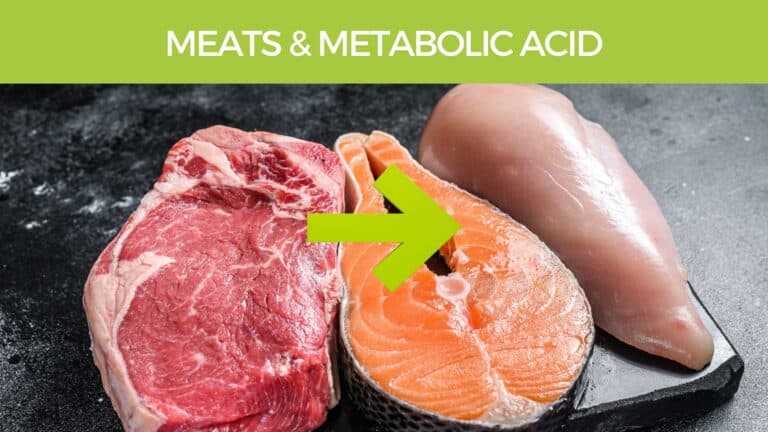
Meat & Metabolic Acid
Animal based-foods such as meat and eggs, in western diets are potentially considered as the most important acid-producing foods. (30)
Some of the reasons for this are:
- Animal protein foods including red meat and eggs are rich in sulfur-containing amino acids, phosphorous and chloride that are potentially acid formers.
- Red meats also have higher levels of nitrogen-containing purines which metabolize into stronger acids like uric acid which can lead to gout (24).
- Red meats, such as beef and lamb, are generally considered to be more acid-forming compared to white meats like chicken and turkey.
Going vegetarian can greatly reduce the acid load in your body. (12)
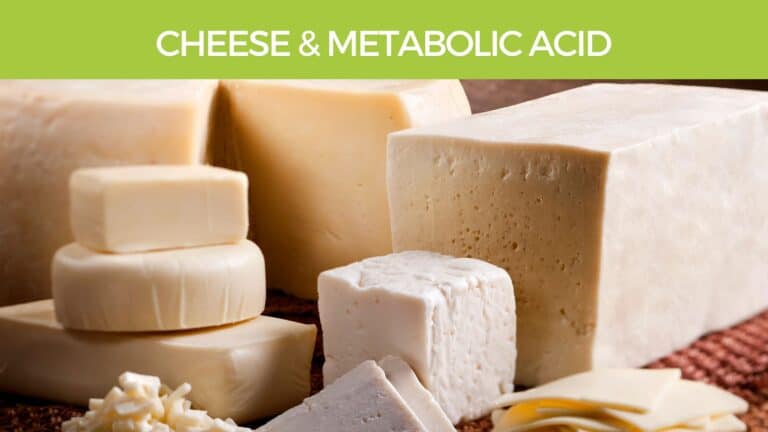
Cheese & Metabolic Acid
Cheese is considered an acid-forming food primarily due to its high protein and phosphorus content.
Here’s a breif look at why cheese contributes to acidity in the body:
- High Protein Content: Cheese contains significant amounts of protein, particularly casein, which breaks down during digestion to release sulfur-containing amino acids that are metabolized into sulfuric acid.
- Phosphorus: Cheese is also rich in phosphorus forming Phosphoric acid, which is another contributor to the acid load.
- Fat Content: The saturated fats found in cheese, influence the acid-base balance. Fatty acids are metabolized into acidic ketone bodies, during fasting or low-carb diets, which can exacerbate acid production.
- Fermentation Process: During fermentation, bacteria produce lactic acid, which adds to the overall acidic properties of the cheese.
Because of these factors, consuming large amounts of cheese can increase the body’s acid load, which some theories suggest might contribute to calcium leaching from bones to neutralize the acid, potentially leading to decreased bone density.
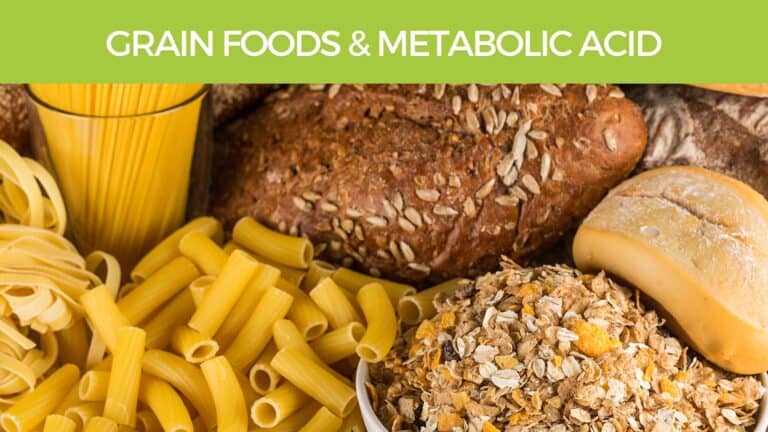
Refined Grains & Metabolic Acid
Most grains, including wheat, rice, and oats, are considered moderately acid-forming in the body.
This is because:
- Grains contain phosphorus, which gets converted into phosphoric acid. Whole grains might have less of an acidic effect compared to refined grains because they contain more magnesium and potassium, which can help balance their acid-forming nature.
- Excessive intake of grains, especially refined grains devoid of their natural minerals, can lead to an increased acid load, which may require neutralization by alkaline minerals from other sources.
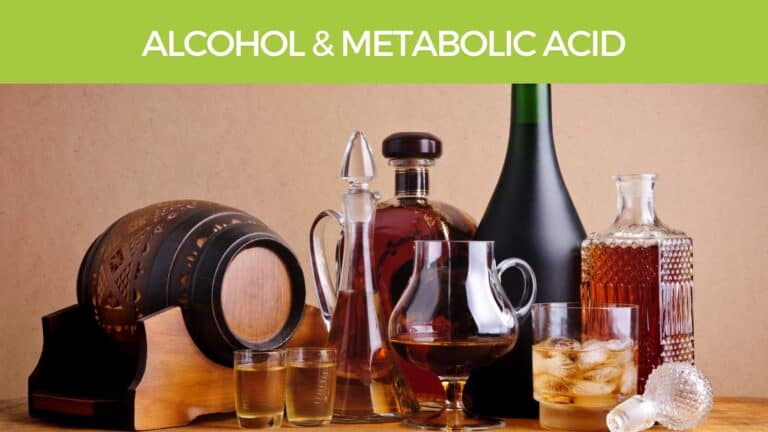
Alcohol & Metabolic Acid
Since antiquity, alcohol consumption has been linked to gout. More formal research from the 1960s demonstrated that alcohol administration caused decreased uric acid excretion and hyperuricemia. (20)
Other acid-forming foods include sugar, saturated Fats, meat, coffee, and cheese. Acidogenic dietary intake such as high protein consumption can have an immediate effect on increasing net acid production while low protein lactovegetarian consumption can result in significantly reduced net acid excretion. (17)
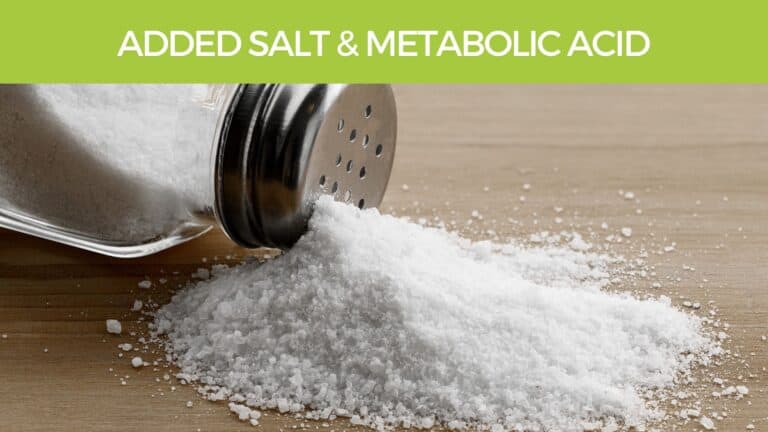
Salt & Metabolic Acid
Added salt is in many processed foods, so avoiding processed foods and only using unprocessed salt is worth considering.
Here’s why:
- There is evidence that in healthy humans the increased sodium in the diet can predict the degree of metabolic acidosis when consuming a net acid-producing diet. Excess dietary sodium has been shown to result in hypertension and osteoporosis in women. (12)
- Sodium chloride is reported to be an independent and causal factor for inducing metabolic acidosis in a dose-dependent manner (17).
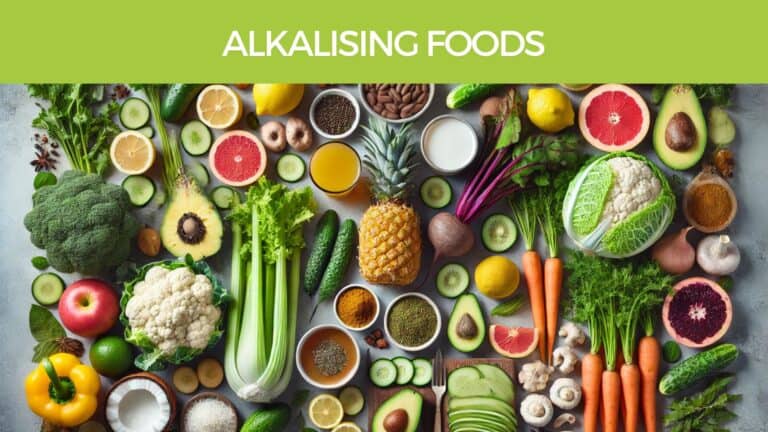
Alkaline diet foods
Alkaline diets may result in a number of health benefits as outlined below:
- Vegetables and fruits are high in malate, citrate, and glutamate, which are potentially base formers that generally alkalise the body.
- Increased fruits and vegetables in an alkaline diet would improve the K/Na ratio and may benefit bone health, reduce muscle wasting, as well as mitigate other chronic diseases such as hypertension and strokes.
- The resultant increase in growth hormone with an alkaline diet may improve many outcomes from cardiovascular health to memory and cognition.
- An increase in intracellular magnesium, which is required for the function of many enzyme systems, is another added benefit of the alkaline diet. Available magnesium, which is required to activate vitamin D, would result in numerous added benefits in the vitamin D apocrine/exocrine systems.
- Alkalinity may result in an added benefit for some chemotherapeutic agents that require a higher pH. (12)
- Alkali–producing fruit and vegetables may, therefore, contribute to a reduction in lean tissue mass in older adults. (15) Alkalizing foods largely include fruit and vegetables – A three-year study looking at a diet rich in potassium, such as fruits and vegetables, resulted in the preservation of muscle mass in older men and women (12)

Apples: Apples contain malic acid, which is an alkalizing agent and helps maintain liver function and improve digestion, thus aiding in the removal of harmful toxins from the body. They are also rich in soluble fiber which helps to cleanse the intestines.
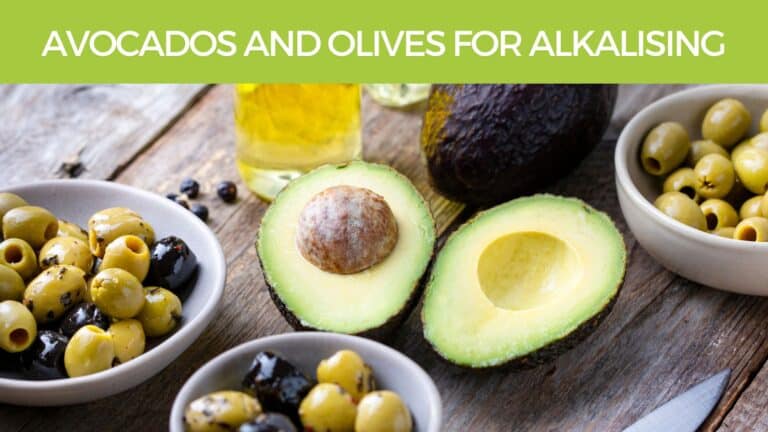
Avocados and Olives: These are high in monounsaturated fats and have beneficial effects on blood pH and overall health due to their alkalizing mineral content.

Celery: Celery is rich in water and electrolytes like potassium, which helps to flush out excess acids from the body. Its high water content also helps hydrate the system, further facilitating the removal of acidic toxins.
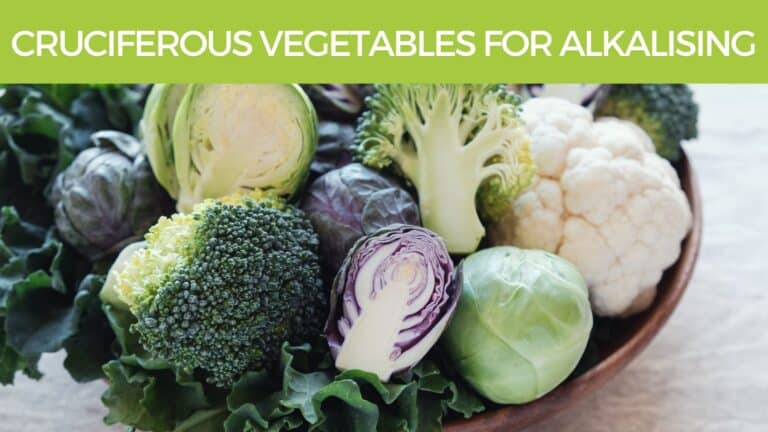
Cruciferous Vegetables: Broccoli, cauliflower, Brussels sprouts, and cabbage are not only nutrient-dense but also contain compounds that help neutralize acids. They are rich in magnesium and potassium, which contribute to their alkalizing properties.
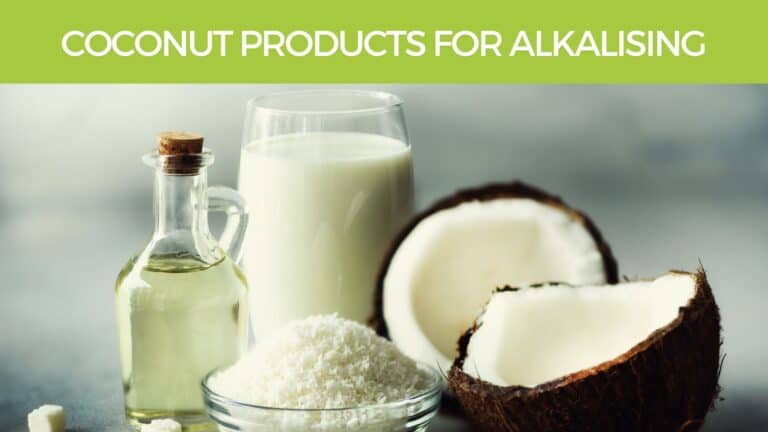
Coconut Products: Fresh coconut water is alkalizing and provides a natural source of potassium, magnesium, and other electrolytes that help maintain the body’s pH balance.

Cucumbers: Like celery, cucumbers are high in water content, which aids in flushing out acidic toxins and hydrates the body. Cucumbers also contain alkaline-forming minerals and can help soothe gastric and acid reflux issues.

Herbs and Spices: Fresh herbs like parsley, cilantro, basil, and spices such as turmeric and cinnamon can significantly reduce dietary acid load, thanks to their high mineral content and health-promoting phytonutrients.

Herbal Teas: While lemon is technically acidic, it has an alkalizing effect on the body once metabolized. Herbal teas such as ginger, chamomile, and green tea can also help neutralize body acids.

Leafy Greens: Leafy greens such as spinach, kale, and Swiss chard are among the most alkaline foods. They are loaded with alkaline minerals like magnesium and calcium, which help to counteract acidic conditions in the body. The chlorophyll in green vegetables also plays a significant role in detoxifying the body.

Lemons: Although lemons are citric acid-rich, they have a high concentration of alkaline minerals such as potassium, magnesium, and calcium, which have a strong alkalizing effect on the body once metabolized. The end products of digested lemons are alkaline, which can help raise the body’s pH level.

Melons and Tropical Fruits: Watermelon, cantaloupe, mangoes, and papayas have a high water content and are rich in electrolytes that help hydrate the body and balance pH levels.
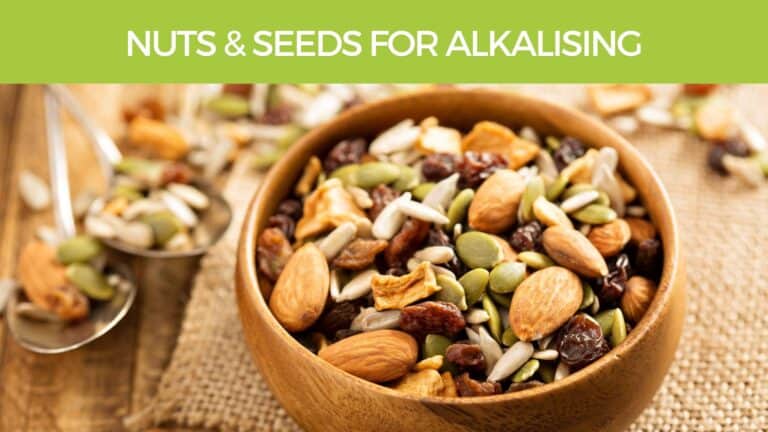
Nuts and Seeds: Almonds, chia seeds, flaxseeds, and pumpkin seeds are among the best alkalizing options. They provide healthy fats, protein, and essential minerals like magnesium, which help balance pH levels.
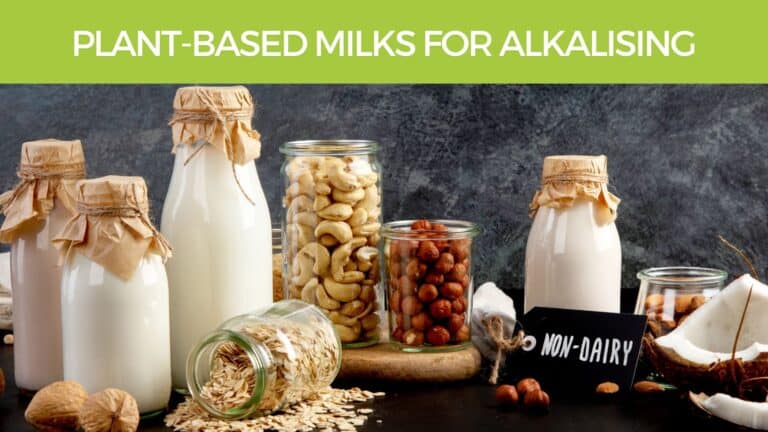
Plant-Based Milks: Unsweetened almond milk, soy milk, and other plant-based milks often have an alkalizing effect when they replace dairy, which is typically more acid-forming.

Root Vegetables: Many root vegetables like beets, carrots, sweet potatoes, and radishes are high in alkalizing minerals and have a rich nutrient profile that can help counteract acidity.
Alkaline diet meal Planner
Get Your Free 14-Day Detox Meal Planner and alkalise your body with foods and herbs.
This works perfectly alongside the Ultimate Herbal Detox or BodiClenz programs that contain all the herbs you need to clear acid and toxin build-up from your system.

Putting It All Together
I always suggest completing a bi-annual Herbal DETOX Program which includes a meal-by-meal alkaline diet plan for 14 or 30 days.
During this program you should drink plenty of water because that has a neutral Ph, and do lots of deep meditative breathing.
People who complete the Herbal Detox program often report a reduction in aches and pains, along with weight loss of 4-5kg on average when this is needed.
If you need a little further weight loss then The Ultimate Herbal SLIM and Ultimate Herbal BodiTune can assist. They both include a whole food diet, which consists of mostly fresh fruits and vegetables.
If you’re interested to go deeper, the rest of this page delves further into the types of acidosis and their biological mechanisms.
Understanding Metabolic Acidosis - A Deep Dive
Life on earth depends on appropriate pH levels in and around living organisms and cells. Human life requires a tightly controlled pH level in the serum of about 7.4 (a slightly alkaline range of 7.35 to 7.45) to survive.
Even the pH of the soil in which plants are grown can have a considerable influence on the mineral content of the food we eat. (12) Acidosis is a condition in which there is too much acid in the body fluids. It is the opposite of alkalosis (a condition in which there is too much base in the body fluids). (9)
It is generally accepted that agricultural humans today have a diet poor in magnesium and potassium as well as fiber and rich in saturated fat, simple sugars, sodium, and chloride as compared to the pre-agricultural period.
This results in a diet that may induce metabolic acidosis which is mismatched to the genetically determined nutritional requirements. With aging, there is a gradual loss of renal acid-base regulatory function and a resultant increase in diet-induced metabolic acidosis while on the modern diet. (12)
It would be prudent to consider an alkaline diet to reduce morbidity and mortality of chronic disease that is plaguing our aging population. (12) We will discuss this further below. First, let’s look at the two major types of chronic acidosis.
Chronic Respiratory Acidosis
Respiratory acidosis develops when there is too much carbon dioxide, and, therefore, acid builds up in the body. This type of acidosis is usually caused when the body is unable to remove enough carbon dioxide through breathing. (9)
The inability of the lungs to perform their job of gas exchange is the primary reason for respiratory acidosis. Obstructive mucous and pollution combined could severely disrupt the lungs. Chronic obstructive pulmonary disease (COPD) is a major public health problem. Its prevalence varies according to country, age, and sex.
On the basis of epidemiologic data, the projection for 2020 indicates that COPD will be the third leading cause of death worldwide and the fifth leading cause of disability (5) Even though the overall prognosis of COPD patients is lately improved, the mortality rate remains high, and acid-base disorders occurring in these subjects can affect the outcome.
Clinical and epidemiological data clearly demonstrate that the severity of acidosis is associated with poor prognosis. (5) Considering the worldwide problem with air pollution this chronic acidosis problem is likely connected with chronic lung diseases such as COPD and asthma, not to mention that most of us only breathe 1/3 of our lung capacity.
During exhalation, carbon dioxide produced by cellular respiration is projected into the environment. In the human body, carbon dioxide combines with water via carbonic anhydrase and forms carbonic acid which dissociates into a hydrogen ion and bicarbonate. This is why a reduced respiratory rate will lead to a decreased pH; the more carbon dioxide is exhaled, the less carbon dioxide present for this reaction. (31)
Respiratory acidosis as a primary disorder is often caused by hypoventilation. This can be due to multiple causes including chronic obstructive pulmonary disease, opiate abuse/overdose, severe obesity, and brain injury. (31)
Deep Yogic meditative breathing is a great way to reduce the acidosis caused by insufficient breathing, which occurs when we are under stress.

Chronic Metabolic Acidosis and Kidney Function
Your kidneys play a major role in regulating the pH of your blood. Their major role is to eliminate acids from your blood along with other wastes and toxins. Metabolic acidosis develops when too much acid is produced in the body and the kidneys cannot keep up with the demand, and are unable to remove enough acid from the body. (9)
If your urine starts to smell strong or you get aching kidneys then you may be suffering the beginnings of low-grade metabolic acidosis affecting your kidneys. Gout and kidney stones are also signs of chronic acidosis. See more on this below.
Chronic metabolic acidosis is a process whereby an excess acid load is chronically placed on the body due to excess acid generation or diminished acid removal by normal homeostatic mechanisms.
Two common, often-overlooked clinical conditions associated with chronic metabolic acidosis are aging and excessive meat ingestion. (1) Because the body’s homeostatic response to these pathologic processes is very efficient, the serum HCO3− (acid buffer) and blood pH are frequently maintained within the “normal” range.
Nevertheless, these homeostatic responses engender pathologic consequences, such as nephrolithiasis (kidney stones), bone demineralization, muscle protein breakdown, and renal (Kidney) growth. (1) A low-carbohydrate high-protein diet with its increased acid load results in very little change in blood chemistry, and pH, but results in many changes in urinary chemistry.
Urinary magnesium levels, urinary citrate, and pH are decreased, urinary calcium, undissociated uric acid, and phosphate are increased. All of these result in an increased risk for kidney stones (12)
The inflammation connection
Normal human subjects have demonstrated that only about one-half of a mineral acid load is buffered in the extracellular space and red blood cells. The remaining hydrogen ions exchange with sodium and potassium from tissue and bone and are presumably buffered in these areas. Van Slyke and Cullen first observed that total blood volume could account for the buffering of only one-sixth of a mineral acid load and suggested that buffer substances throughout the body, including those of the tissues, are utilized in the defense against metabolic acidosis. (27)
This means that our body tissues can be responsible for dealing with the other five-sixths of the metabolic acid load. Chronic acidosis will put the body into a constant state of inflammation and this inflammation underlies our most common chronic diseases. Higher levels of inflammatory biomarkers are associated with increased mortality and the development of chronic disease.
A recent study reported that all-cause mortality increased by 11% for every increase in leukocyte count. Other studies also reported a significant relationship between mortality and markers of inflammation. A higher leukocyte count, C-reactive protein level and mean platelet volume predict the development of cardiovascular disease and cancer. (21)
Existing studies linking acidosis to inflammation have generally examined the impact of acute large reductions in extracellular pH. However, chronic small reductions in pH affect a variety of physiologic processes and may have a substantial impact on inflammation and the development of chronic disease. (21)
It is now recognized that a mild pro-inflammatory state is correlated with the major degenerative diseases of the elderly. The inflammatory mediators increase with age in both women and men and are highly correlated with obesity and degenerative disease. (22)
Stress And Alkaline Diet
In a study that assessed gastric acid output in relation to personality traits, it was found that subjects who were considered to have a higher level of impulsivity and expressed emotions more freely were more likely to react with a marked increase in gastric acid output when stimulated by stress. (19) The perceived stress level measured by a standardized, well-established instrument was found to be higher in individuals with acid reflux esophagitis. (19)
Two Global Epidemics
From the information above you can see the two major systems which control acid levels in the body, the lungs, and the kidneys are under attack. The lungs are affected by epidemic levels of COPD and the kidneys are under attack by dietary acid causing a global escalation of Kidney stones The lungs are largely affected by toxic pollution and stress levels while the kidneys struggle with processed food, fast foods and high levels of starch in the diet.
We can do our best to avoid pollution and we can reduce stress levels by making changes in our lifestyle and taking time out to relax. The biggest factor we can influence is our dietary acid load, which we will discuss here. So what foods are acid and alkaline to the body?
Potential Renal Acid Load (PRAL)
An established method of estimating acid loads of foods or diets is by calculating the potential renal acid load (PRAL).
What is PRAL?
There is a lot of information on the internet about Acid/alkaline foods, and lots of charts available, all of which may or may not be accurate. Internet sites that cover the subject often differ and it is often unclear how the authors come to their conclusions.
PRAL is different: it is a scientific approach, based on a simple formula, as calculated by Dr. Thomas Remer. The formula calculates the acid or alkaline load of a specific food. If you add the PRAL values for all the foods you eat, you get the net acid or alkaline load for the day. (14)
A negative PRAL value means the food has an alkaline (base forming) load, a positive value means the food has an acid load. (14) You can check the PRAL on any food using this calculator PRAL provides an estimate of the production of endogenous acid that exceeds the level of alkali produced for given amounts of foods ingested daily.
The concept of PRAL calculation is physiologically based and takes into account different intestinal absorption rates of individual minerals and of sulfur-containing protein, as well as the amount of sulfate produced from metabolized proteins.
This method of calculation was experimentally validated in healthy adults, and it showed that, under controlled conditions, acid loads, and renal net acid excretion can be reliably estimated from diet composition. (26)
In one current large, nationally representative, population-based study, it was demonstrated that people with higher diet-induced acid load had higher Cardiovascular Disease (CVD) risks in the general population. Diet-induced acid load was closely linked with CVD risk especially among middle-aged individuals. In addition, higher PRAL scores were associated with CVD risk independent of obesity, exercise, and insulin resistance.
To date, the health effects of acid-base imbalance were mainly investigated in bone mass and kidney stones. Recently, studies on systemic metabolism were conducted that extended the effects of diet-induced acid load on one’s body. For example, a prospective study showed that higher PRAL scores correlated with the incidence of type 2 diabetes.
Average potential renal acid loads (PRAL) of certain food groups (related to 100 g edible portion)
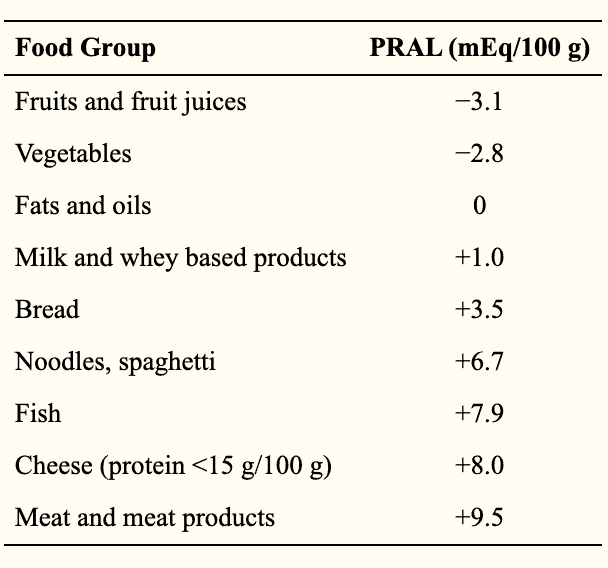
Conclusion
With the global escalation of processed foods, chemical additives, saturated fats, sugar, added salt, alcohol, airborne pollutants combined with our already stressful lives the toxic load is obvious. When the kidneys have become overloaded with dietary acid as we get older, and the lungs congested with mucous and pollutants the body will eventually become unable to cope with the acid load.
Combine this with a high level of stress and you have a recipe for disaster. What can we do?

